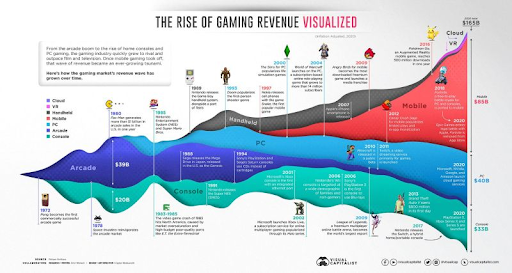How to Develop Ideas: A 3-Step Framework for Creating Genius Ideas
By Ashton Mathai
All my greatest ideas come at a moment I can’t write them down.
Whether it’s while I’m driving, in the shower, or at lunch with friends, something happens that sparks a vivid image or a witty one-liner that I want to create something around. That spark of creativity will hopefully lead to a finished piece, be it a book, an article for a client, a podcast or social media post, or anything else.
When I finally do get to write down my “amazing” idea, something happens…
I realize that I have no roadmap to make my idea a reality, much less make it good.
And that’s usually the trouble, isn’t it? We have to figure out, trial-and-error style, how to develop ideas from a whisper into something concrete.
So, from someone that has learned how to navigate the unknown, here are three steps to transform your idea into a reality.
Step 1: Channel your curiosity.
The first step of executing on your idea is to leverage your curiosity to give it a little life.
Meaning, become a constant collector of any inspiration related to your idea. Look at what other people in your field, medium, or industry have done and study their work religiously. Subscribe to newsletters and LinkedIn thought leaders, follow Twitter threads, and comb through blogs.
Pro Tip: Don’t limit yourself to your industry; it’s equally important to learn from “outside,” too.
One of my favorite graphic design professors in college never let us create moodboards from other similar concepts. If we were gathering inspiration for a restaurant project, we weren’t allowed to pull from other restaurant designs.
It’s a great practice that trains our minds to think beyond the boundaries we’ve created for ourselves.
When planning an executive’s social calendar, we don’t pull exclusively from interviews we’ve conducted with them and messaging pillars we designed at the outset. Google Search becomes our best friend; we dig through the archives of the Internet, review articles and tweets, and even click through memes to bring in humor and increase reach (if our boss sees this, I swear it’s strictly work-related!).
For example, one of our clients connects brands to mobile carriers to distribute and monetize their content (also called direct carrier billing).
After falling down a deep Internet hole, we found this graphic about the history of gaming revenue. Even though it’s not directly linked to the concept of direct carrier billing, it opens our client up to a broader audience. It also positions him as a mobile commerce expert above and beyond what his current role is.
When you allow yourself to drift outside of the “rules,” you’ll find that your idea will begin to take shape — from a tiny spark to a smaller, flickering flame.
Now you’re ready for step two.
Step 2: Enrich the idea.
I have the same issue with my bank account as I do with under-developed content: it’s not very rich and tends to be surface-level.
The next step after you’ve fleshed out the base of your idea is to build on top of that. No one wants a shallow piece of marketing that sounds nice. They want information that enhances their lives or work in some way.
I recently attended an ideas workshop hosted by Jade Chang and Ann Friedman, where they gave six strategies for making your idea richer, deeper, and more compelling. I want to share one here:
Develop Ideas With the Telescope/Microscope Strategy
You have two options here: take your small, concrete idea and pan out to observe how it fits into a larger framework (telescope). The second is to take your broad, expansive idea and zoom into something more small and intricate (microscope).
Let’s say you want to make a bi-weekly podcast and you don’t know anything except that you want to have discussions with other startup leaders. Applying the microscope method — let’s zoom in a little bit.
What about these discussions do you want to hone in on?
Is it their methodology around how they raised funding? How they developed their idea? What their future plans are, and how they will achieve them? Hone in until you find something unique in the marketplace.
Conversely, you might apply the telescope method. What does this one founder’s story say about larger startup trends?
Here’s the bottom line: the value your idea provides your target audience must be clear for them to want to spend time or money on it. If you think your idea is fully-fleshed and ready to create, ask yourself this question: would this capture my attention, money, time, reporting skills, etc.? Or, if you’re not the intended audience, put yourself in their shoes or, better yet, ask them!
If the answer is no, back to the drawing board you go.
Step 3: Actually DO the thing.
Even the greatest idea in all of human history can’t bring itself into existence. You, your team, and any other stakeholder will have to do the heavy lifting. Here are some tips – from the above workshop – to make the process a little easier:
Establish accountability for yourself: tell someone about the project or create a deadline to stick to — some kind of external accountability you must hold yourself (or your team) to.
Hone in on your driving force: why did you decide to follow through with this project? Maybe it’s to propel the business forward, secure more coverage for a client, or simply have your name on something you’re passionate about. Remember that when you want to quit.
Create a framework for success: know your limits and what helps and harms your process. If you have back-to-back meetings every day, schedule time with yourself to work on the project. If you need to set up a step-by-step outline, do it.
And through it all, remember: you can’t fix a project that doesn’t exist. The most important thing you can do for your idea is to bring it to life — editing and reworking the details come later.
Learning how to develop ideas takes thought and practice, but is one of the most important skills for any industry (especially the marketing world I’m in). Now go forth and create your own ideas! The world is waiting on them.


